
Some Florida State football players visited Montford Middle School in Tallahassee yesterday, but Leah Paske didn’t realize it until later, when a friend sent her this photo of WR Travis Rudolph eating lunch with her son Bo, who has autism.

Some Florida State football players visited Montford Middle School in Tallahassee yesterday, but Leah Paske didn’t realize it until later, when a friend sent her this photo of WR Travis Rudolph eating lunch with her son Bo, who has autism.

People tend to forget that Japan isn't called Japan in Japanese (it's called Nihon) or that Germany is actually the Budesrepublik Deutschland to the Germans, but these endonyms are an important part of a country's identity.
An endonym is the name for a place, site or location in the language of the people who live there. These names may be officially designated by the local government or they may simply be widely used.
And yet the average map doesn't include these endonyms, so people are left wondering what a suomen tasavalta or rzeczpospolita polska is when they see it written somewhere.
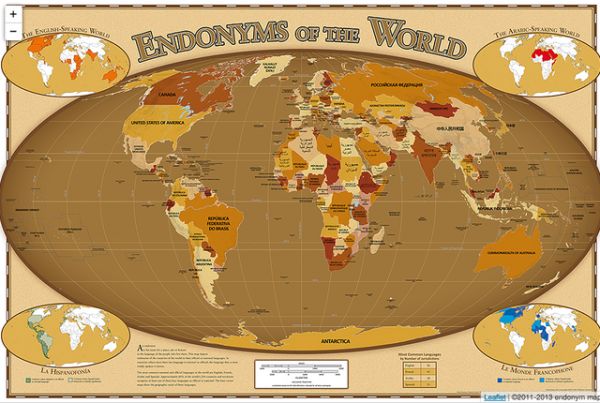
At Endonym Map you can see what all the countries of the world call themselves in their official or national language, on a large, nice looking map which the site is constantly striving to improve:
The vast majority of names come from the United Nations Group of Experts on Geographic Names and the U.N.'s database of country names. Other sources include the CIA World Fact Book, Wikipedia and various government websites.
One big change I am exploring is the inclusion of minority language endonyms in some fashion. I would love to put all three official languages for Belgium on the map, or both Ireland and Éire for that matter. But with the limited space on a fixed map, there's just not room to do it fairly for all countries. And it bugs me to no end that places like South Africa and India have a dozen or so recognized languages, but there's only room on the map for one. But I am working on it and hopefully will come to a solution soon.
In the meantime, please enjoy the map!
-Via mental_floss
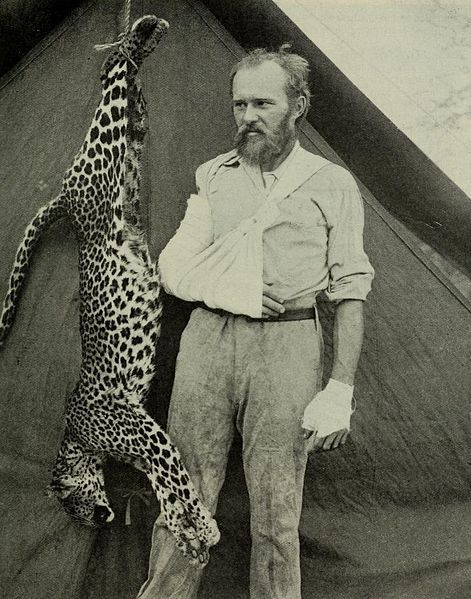 The following article is from Uncle John’s Factastic Bathroom Reader.
The following article is from Uncle John’s Factastic Bathroom Reader.
While researching an article on taxidermy recently, we discovered Carl Akeley, a man widely considered to be a pioneer in the field because of his artistic approach to the craft. But that’s not all Akeley did: he also changed the way museums are designed, innovated nature photography, and founded Africa’s first nature preserve. And it all started the day he killed a leopard with his bare hands.
THINK FAST!
Carl Akeley wasn’t planning to hunt big game in Africa barehanded— it just happened that way. The incident occurred during his first trip to Somaliland in 1896, when he was hunting and observing wildlife for Chicago’s Field Museum of Natural History. Akeley and some companions were hunting ostriches at dusk when they heard a rustle in the bush. Akeley fired into it, heard a yowl, and before he could blink, 80 pounds of spotted fur, pointy teeth, and sharp claws was hurtling through the air at him. The leopard caught Akeley’s left hand in its powerful jaws and started shredding his right arm and body with its claws and feet. Unable to pull his hand out of the predator’s mouth, Akeley punched the leopard’s throat as hard as he could. The animal choked, and Akeley slammed it to the ground, crushing its trachea. Then he jumped onto its rib cage with both knees and suffocated the beast. The photo of the bearded he-man posed in front of his tent with the leopard’s body hanging from a rope has become the iconic image of the “great white hunter.”
CURIOUS CARL 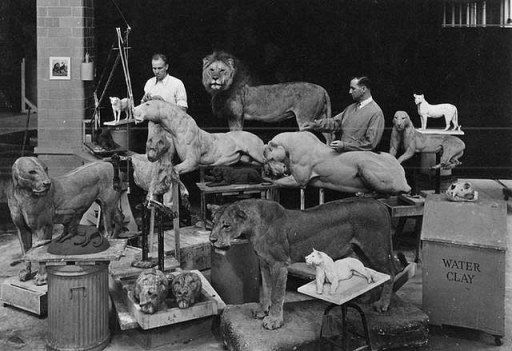 Born in upstate New York in 1864, Akeley grew up on a farm but had a strong interest in sketching wildlife. At the age of 12, a visit to an exhibit of 50 small animals and birds by a local taxidermist named David Bruce changed Akeley’s life— he became obsessed with taxidermy. (His first try at preserving an animal: he stuffed a friend’s dead canary as a gift to her.) At 18, he apprenticed with Bruce, who was impressed by the young man’s artistic skill and advised him to apply for a job at Professor Henry Ward’s Natural Science Establishment in Rochester. Akeley hated the conventional “upholstery” method of taxidermy— taxidermy— stuffing the animals with sawdust, cotton, or straw and propping them up on legs that contained the bones. He thought it was crude and lacked artistic vision. Aiming for a more realistic presentation, Akeley worked late at night perfecting his own style.
Born in upstate New York in 1864, Akeley grew up on a farm but had a strong interest in sketching wildlife. At the age of 12, a visit to an exhibit of 50 small animals and birds by a local taxidermist named David Bruce changed Akeley’s life— he became obsessed with taxidermy. (His first try at preserving an animal: he stuffed a friend’s dead canary as a gift to her.) At 18, he apprenticed with Bruce, who was impressed by the young man’s artistic skill and advised him to apply for a job at Professor Henry Ward’s Natural Science Establishment in Rochester. Akeley hated the conventional “upholstery” method of taxidermy— taxidermy— stuffing the animals with sawdust, cotton, or straw and propping them up on legs that contained the bones. He thought it was crude and lacked artistic vision. Aiming for a more realistic presentation, Akeley worked late at night perfecting his own style.
BODY BY AKELEY
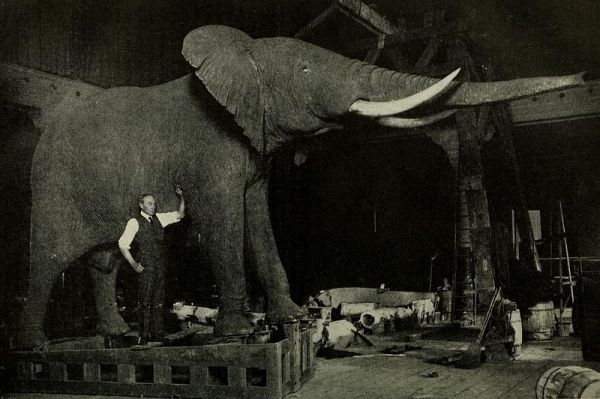
Akeley’s technique started with making an armature of wood, wire, or the animal’s skeleton. Then he applied modeling clay or plaster to sculpt the animal’s muscles and tendons. Akeley took great care in attaching the fur and stitching it so the seams never showed. His artistry and attention to detail soon caught the attention of Professor Ward, who, in 1885, assigned Akeley to work with veteran taxidermist William Critchley on the mammoth task of preserving the much-loved Barnum and Bailey circus elephant, Jumbo. (Jumbo had died in a head-on collision with a train a few months earlier.) The elephant took five months to mount, but that job established Akeley’s reputation as an artist to be respected. He soon moved to the Milwaukee Public Museum in Wisconsin and designed and built the very first museum habitat diorama, displaying local birds and mammals in realistic surroundings. In 1896 Chicago’s prestigious Field Museum offered the young wizard a job and a chance to go to Africa. Thus began Akeley’s transformation from mild-mannered taxidermist to swashbuckling big game hunter.
ELEPHANTS AND GATORS AND RHINOS, OH MY!
Between 1896 and 1926, Akeley made five expeditions to British Somaliland, British East Africa, and the Belgian Congo. Each time, he returned with harrowing stories of his adventures. He contracted malaria and jungle fever. While resting on the Serengeti Plain, he was charged by three rhinos at once. In Uganda he shot a giant crocodile on the opposite bank of the Nile River. As he swam across to retrieve the body, he found that the river was infested with crocodiles; one grabbed and killed his porter. Finding himself stranded on the wrong side of the river, with no desire to swim back, Akeley used the dead croc as a raft and his rifle as a paddle to float back to safety.
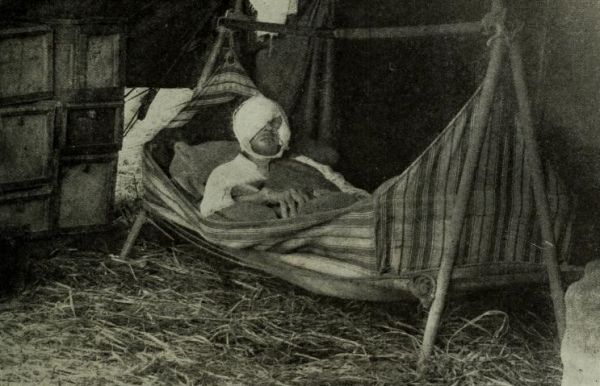
He wasn’t always that lucky. On Mount Kenya, a 13-foot-tall bull elephant burst out of the trees and charged him. The enraged beast tried to impale him with its tusks, but Akeley wedged himself between the six-foot-long ivory daggers and held on for dear life. The elephant fought by doing a headstand on the explorer, burying him in the mud. Akeley passed out; the beast ran off, and so did Akeley’s native guides, leaving him for dead. He came to hours later and spent the next three months in the hospital. The elephant had broken over half of his ribs, piercing his lung in the process.
GORILLAS IN THE MIDST  Like most naturalists of his day, Akeley considered killing, photographing, and stuffing wild animals to be the best way to preserve Africa’s quickly disappearing wildlife. His thinking changed in 1921 while leading an expedition to “collect” mountain gorillas in the Virunga Mountains of the Belgian Congo. He was the first to observe and film these rare gorillas, and he found them fascinating. Upon dubbing one silverback male “the Old Man of Mikeno,” he said, “I am fonder of him than I am of myself.” Still, he shot the gorilla and stuffed it for a museum exhibit. The animal’s death haunted Akeley, and he turned away from taxidermy to create sanctuaries for the fast-disappearing animals. He talked King Albert I of Belgium into founding the first African national park as a safe haven for the mountain gorilla. Today, solely because of Akeley’s efforts, Virunga National Park is home to approximately 400 gorillas.
Like most naturalists of his day, Akeley considered killing, photographing, and stuffing wild animals to be the best way to preserve Africa’s quickly disappearing wildlife. His thinking changed in 1921 while leading an expedition to “collect” mountain gorillas in the Virunga Mountains of the Belgian Congo. He was the first to observe and film these rare gorillas, and he found them fascinating. Upon dubbing one silverback male “the Old Man of Mikeno,” he said, “I am fonder of him than I am of myself.” Still, he shot the gorilla and stuffed it for a museum exhibit. The animal’s death haunted Akeley, and he turned away from taxidermy to create sanctuaries for the fast-disappearing animals. He talked King Albert I of Belgium into founding the first African national park as a safe haven for the mountain gorilla. Today, solely because of Akeley’s efforts, Virunga National Park is home to approximately 400 gorillas.
BIG FINISH
During his lifetime, Akeley hunted with Teddy Roosevelt, served as president of the prestigious Explorers Club, and was a respected author and nature photographer, for which he invented the Akeley Motion Picture Camera— a Hollywood staple in the 1920s and 1930s. He also invented a “cement gun” that shot concrete into his taxidermy molds. Now called “shotcrete,” it was adapted for use in building the Panama Canal and is still used by construction workers to build pools, walls, and anything formed with cement.
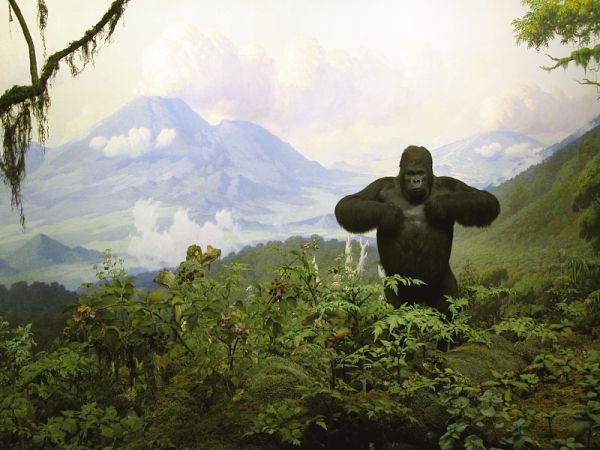 (Image credit: Fritz Geller-Grimm)
(Image credit: Fritz Geller-Grimm)
While working for the American Museum of Natural History in New York City from 1909 to 1926, Akeley meticulously designed the Akeley Hall of African Mammals, considered one of the greatest museum exhibits in the world. It contains 28 habitat dioramas depicting life on the Serengeti Plain, the Upper Nile, and the mountains of the Belgian Congo, all in minute detail. In 1926 the 62-year-old Akeley died of a fever while visiting his beloved mountain gorillas. His burial place is pictured in the mountain gorillas diorama in the Akeley Hall of African Mammals.
_______________________________
 The article above is reprinted with permission from Uncle John’s Factastic Bathroom Reader. The 28th volume of the series is chock-full of fascinating stories and facts, and comes in both the Kindle version and paper with a classy cloth cover.
The article above is reprinted with permission from Uncle John’s Factastic Bathroom Reader. The 28th volume of the series is chock-full of fascinating stories and facts, and comes in both the Kindle version and paper with a classy cloth cover.
 Since 1988, the Bathroom Reader Institute had published a series of popular books containing irresistible bits of trivia and obscure yet fascinating facts. If you like Neatorama, you'll love the Bathroom Reader Institute's books - go ahead and check 'em out!
Since 1988, the Bathroom Reader Institute had published a series of popular books containing irresistible bits of trivia and obscure yet fascinating facts. If you like Neatorama, you'll love the Bathroom Reader Institute's books - go ahead and check 'em out!

Once you’ve learned to scuba dive and invested in the necessary equipment, you’ll certainly want to explore the undersea world. The rest of us can just dream of seeing some of the most beautiful undersea sights around the globe. Check out some destinations for scuba divers and what they have to offer. Somewhere in the middle of the list is Bikini Atoll.
Many know Bikini Atoll as the site of nuclear weapons testing in the mid 1900s, but now it’s a popular spot for those who want to explore wrecks while deep water scuba diving. The area is a veritable graveyard of different ships that you can swim around, including naval ships from World War II. The waters are clear enough to search what’s below, and even today those who dive there commonly find well preserved historical artifacts and other items.
Enure01What the hell is going on in the US.
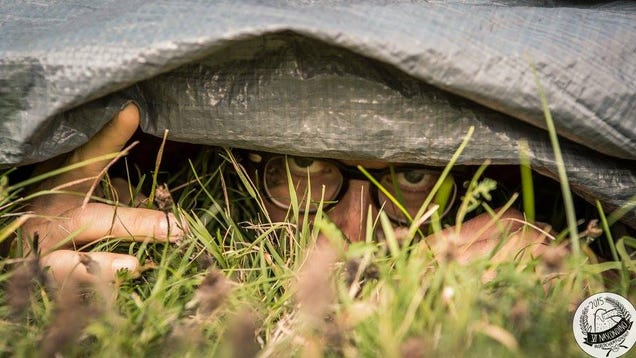
Somewhere deep in the Italian countryside, a group of adults lie in wait, preparing for the Hide-And-Seek World Championship.
Enure01We need to get a boat and start fishing in the Philippines. FUCK that thing is big.

A pearl retrieved off the coast of Palawan Island in the Philippines appears to be the biggest natural pearl ever found, much bigger than the current record holder known as the Pearl of Allah. This one was brought up by a fisherman whose anchor got stuck. He dove down to free it, and found it was wedged in a giant clam shell. He brought the clam up and saw it had a gigantic pearl inside. The yet-unnamed fisherman put the pearl away under his bed as a good luck charm. That was ten years ago.
According to various online reports a fire in his residence forced the fisherman to move house prompting him to turn the priceless piece over to a local tourism officer.
The prize pearl measures in at a jaw dropping 1ft in width and 2.2 feet in length making the world’s former biggest pearl –The Pearl of Allah- look like a lightweight.
The 34 kilogram pearl has yet to be authenticated by a gemologist. Read more of the story at Yahoo News. -via Digg
(Image credit: Aileen Cynthia Maggay-Amurao)
Neatorama is proud to bring you a guest post from Ernie Smith, the editor of Tedium, a twice-weekly newsletter that hunts for the end of the long tail. In another life, he ran ShortFormBlog.
 (Image credit: Hannes Grobe)
(Image credit: Hannes Grobe)
Educators had a love-hate relationship with graphing calculators when they launched, but students loved them because they were great for games.
Remember this time last year, when the saga of teenage clock-hacker Ahmed Mohamed turned into a political fireball? That case, if you'll recall, involved a student who chose to bend the rules of his own education by learning things outside of school, only to get punished for it. He quickly found himself over his head, with many of his critics obsessed with discrediting a teenager. (His family has since moved to Qatar, and he's since filed a civil-rights lawsuit against the school district over the incident.) In a way, Mohamed’s efforts were nothing new. Tech-savvy kids have been screwing with teachers’ expectations for generations, and nowhere is this more obvious than the phenomenon of graphing calculators. These devices are immensely hackable, but most classrooms only use a fraction of their capabilities. Here’s why.
For roughly two decades, high schools have been giving graphing calculators to students, requiring them for key math classes, and for pretty much that entire time, students have been figuring out ways to use the devices to bend the rules.
Part of this was actually allowed by Texas Instruments, which around 1990 started making graphing calculators that could be programmed in various ways—generally through a variation of BASIC, but also through low-level assembly code, which had a clear advantage for the slow calculator. To this day, the company’s TI-84 remains its most popular and widely used, with the TI-83 not far behind.
Eventually, the kids got savvy and started learning to program the devices. Naturally, the first programs they built were games, because of course they did. Variations on Super Mario Bros, Pac Man, and Pokémon quickly arrived. The quality of the games got better as the programming techniques got more savvy. Website repositories of said games launched and found lasting popularity. (One such site, TI Calc, has been around for roughly two decades.)
 (Image credit: Flickr user Cooking Cinderella)
(Image credit: Flickr user Cooking Cinderella)
And those kids familiar with hooking up devices to a computer and installing games were suddenly the coolest kids in the classroom. (Or, at least they felt that way.)
I was one of those kids: During the Clinton administration and in the days before USB cables made everything easy, I purchased a flimsy wire that was hand-made by an enthusiast and sent to me via mail, allowing me to plug my TI-82 into my computer’s serial port and install programs and games. So I did the same for my classmates that year. I think I charged, but I can’t remember how much. Admittedly, I learned more about installing crap on an obscure device using a weak cable that year than I ever did about tangents and derivatives.
I remember playing an old Final Fantasy clone all the way through on my calculator. Clearly my education was effective.
1. Despite the fact that graphing calculators don’t have much in the way of connectivity, that hasn’t stopped programmers from successfully building a web browser for the TI-83.
3. The classic first-person shooter Doom has been ported to just about every platform under the sun, and that includes multiple TI calculators. The TI-83 and TI-84 can play this two-color variation on the game, while a version for the TI Nspire gets shockingly close to the PC version.
4. In 2014, someone put together a project Super Smash Bros. on a TI-83. It’s incredibly simplistic, but they succeeded.
5. Most recently, someone figured out a way to get an early version of Android onto the TI Nspire CX.
“The TI-84 was the first platform where I began my interest in game programming, so I will probably always have a little bit of an attachment for it. Plus, I always say that programming for such a restrictive platform really forces you to be creative and work harder to get your work done. If you program something simple for the computer, even if you program it badly it will still run quickly, whereas with a calculator, you need to work extra hard in order to make your code run at a reasonable speed.”
— Programmer Alex Marcolina, discussing why he chooses to program apps on a graphing calculator. Marcolina is pretty good at it—he created a version of Portal, a game known for its complicated physics, on a TI-84 calculator. The feat is particularly impressive due to the fact that just 25k of RAM is accessible to programmers.
 (Image credit: Flickr user bt)
(Image credit: Flickr user bt)
Calculators have long been controversial with educators. For decades, they raised big, important questions: If allowed in schools, would they create a divide between those who can afford a calculator and those who can’t? Will they make students dumber? How does this affect the way that we teach students?
(And we’re not just talking the fancy kind, either. Regular calculators with limited functionality are still controversial among some parents of elementary school children.)
For years, graphing calculators struggled to gain acceptance by teachers. One 1994 study on the issue found that 70 percent of teachers who had access to graphing calculators weren’t using them in their classes. Part of the issue was philosophy; many teachers wanted students to do the math by hand before relying on the calculator. The devices made things too easy.
Slowly but surely, those complaints have started to fall by the wayside. Standardization helped things—in 1994, graphing calculators were added to the College Board’s requirements for teaching AP Calculus, though the restrictions on what kinds of calculators can be used remain fairly strict.
As a result, calculator technology has remained relatively stagnant compared to the rest of the world. When TI tried to update its models to do more stuff—specifically, its Nspire models, which support the creation of spreadsheets—it found that nobody was really all that interested. (Not that they've completely given up on innovation altogether. Since 2012, Texas Instruments has tried to update is approach slightly, by upgrading the TI-84 in ways that don't damage its ability to be used on standardized tests. Among the upgrades: A color screen, more memory, and a thinner profile. These upgrades are akin to the Game Boy Color—though are fairly modest, considering the leaps-and-bounds upgrades we've seen in smartphones over the same period. Earlier this year, the company introduced a Golden Ratio color for the calculator, because of course they did.)
“Here’s the thing. Some technologies don’t change all that quickly because we don’t need them to,” Alexis Madrigal noted in a 2011 Atlantic piece. “Much as we like to tell the story of The World Changing So Fast, most of it doesn’t.”
But some of this stuff is artificially mandated by the rules and restrictions of the medium. To this day, some calculators with touchpads (such as Casio’s Classpad) aren’t allowed to be used during most standardized tests. Your iPhone 6S can run circles around your TI-83, but the limitations of the device are a virtue in testing environments—to put it simply, not everyone in the room will have the latest iPhone, but you can guarantee every student will have the same rough kind of calculator.
And considering that graphing calculators maintain their value largely on the back of standardization in classrooms, anything that threatens this state of affairs becomes a problem. When enthusiasts have tried to stretch the edges of these devices, TI didn’t take too kindly.
In 2009, TI found itself the target of controversy among the tech community when it started filing Digital Millennium Copyright Act (DMCA) complaints against bloggers who published the “signing keys” used to limit the kinds of operating systems that can go onto TI calculators. The Electronic Frontier Foundation quickly cried foul, arguing that TI abused the act through this action.
“This is not about decrypting copyrighted code so that you can distribute it to the four corners of the Internet,” EFF’s Jennifer Granick wrote. “This is about running your own software on your own calculator. So where’s the copyright infringement in that?”
There may or may not have been copyright infringement happening, but one thing is clear: TI has a lot to lose if the integrity of its calculators is broken.

These calculators highlight an odd dichotomy between education and technology. While designed to teach mathematics skills, programmers and rogue calculator owners have taken advantage of the skills learned in the classroom to program and design applications on simplistic platforms.
In a lot of ways, the best comparison point for early TI calculators is the Raspberry Pi. Like that ultra-cheap, ultra-hackable computer, the advantage of graphing calculators as a programming and computing tool is that they’re simple and can be adapted to numerous settings. Unlike the Raspberry Pi, however, your Texas Instruments calculators were never intended for that purpose, and as a result, they created potential distractions for teachers who were focused on teaching a certain curriculum.
But the odd part is that the calculators were arguably more interesting as education tools when they broke the rules. (Or they were really good for playing Mario clones. Either way.)
 A version of this post by Ernie Smith originally appeared in the Tedium newsletter, which tries in vain to make dull topics slightly more interesting. You can follow along on Twitter or Facebook.
A version of this post by Ernie Smith originally appeared in the Tedium newsletter, which tries in vain to make dull topics slightly more interesting. You can follow along on Twitter or Facebook.

You probably always feel like “it’s total bullcrap” any time your car gets towed, but on this one particular Philadelphia street auto-impounding might actually be a scam.

Japanese prime minister Shinzo Abe became Super Mario tonight in the traditional portion of the closing ceremony that previews the next Olympiad. Mario was joined by Pac-Man and famous anime figures, as well:

Green seemed to be a dominant color in the Olympic Games Rio 2016- the green Reals Brazil paid to host the games, the green courts and fields where the games were played, the green backdrops, the green water in the pool...
It's not easy being green... #greenpool#RioOlympics2016pic.twitter.com/cDy3SnYQAW
— Lucy Knight (@lucymk) August 9, 2016
It's safe to say green is the color which best symbolizes the 2016 Olympics, so creating some “green screened” Olympic moments makes perfect sense!
Sorry NBC but a green backdrop is asking for trouble. pic.twitter.com/Ad9ULnDdYh
— shut up, mike (@shutupmikeginn) August 17, 2016
The green backdrops found throughout the Games made it easy for digital manipulator and Imgur user factionman to place the tennis court in any environment- so he naturally chose outer space.
And even the gymnasts discovered they weren't safe from the green screen treatment even though they performed their floor routines on a tan mat.

-Via Mashable, CollegeHumor, PetaPixel
Every year Groupon has a special offer on the state-of-the-art Banana Bunker and every year people are having a hard time figuring out its true purpose.
It must be like Christmas for the social media manager at Groupon each time the product goes up for sale. Just look at these on point responses.
Submitted by:
Enure01Really?

A philosophical question: When does this Eagles season really start? Did it start when their prized draft pick got hurt in the preseason opener? Or perhaps when a DeSean Jackson fan enacted his praxis at the Democratic National Convention
? No, the season started today, when Eagles kicker Caleb Sturgis sustained a concussion after getting hit in the head with an errant punt.

Missing persons cases tend to make the friends and family of the victim fear the worst, and as the case winds on many lose hope of ever seeing the victim again.
But life is full of surprises, and detectives know full well that sometimes the facts of the case aren't what they seem, and the victim might not be a victim after all.

In 1957 cookware salesman and family man Lawrence Bader from Akron, Ohio ignored warnings about an incoming storm and took a boat out on Lake Erie, disappearing during the storm.
His damaged boat was found but Lawrence's body was never recovered, yet eight years later a family friend met Bader's spitting image in Chicago, now named John "Fritz" Johnson.
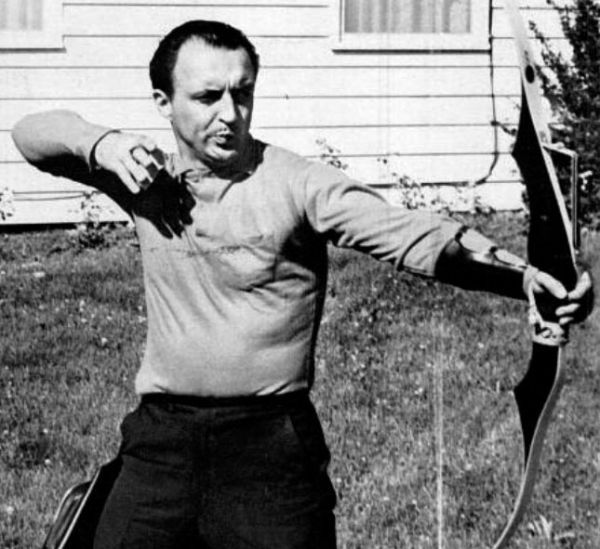
Fritz insisted he was not Bader, and even agreed to let police take his fingerprints to prove it- and the fingerprints proved he was indeed Lawrence Bader.
He claimed to have a form of amnesia that not only erased memories but implanted new ones, but nobody will ever know for sure because Lawrence died of liver cancer before psychiatrists could sort it all out.
At least Lawrence disappeared on purpose, Scottish folk singer Shelagh McDonald didn't mean to disappear just as her career was taking off- she took some bad acid at a party in London, sending her on a terrible trip that instantly ruined her life.

Shelagh's bad trip lasted for weeks and wrecked her voice, so she effectively made herself disappear by moving back home to Scotland and cutting off all ties to her friends and former life.
Thirty years later she was living in a tent with her husband when she saw an article in The Scottish Daily Mail about her disappearance, and to the Mail's surprise Shelagh showed up at their offices very much alive.
Read The 5 Most Insane Twist Endings Of Real Missing Persons Cases here
Enure01Weird?
Donna Roberts and Mark Ellis are happily married with two kids, aged eight and nine, after the two met when Mark texted a phone number he read on the wall of a bathroom stall while he was taking a dump at his local pub.
The note, which read "If you want a good shag call Donna on ***", was written by one of Donna Roberts' ex's.
Mark said that he opened with a "Hi. What are you up to?" because he was curious if she was actually a real human being.
The two have yet to tell their kids how they officially met. "I usually say that he texted me by mistake," Donna added.
Sill a better love story than Twilight.
Submitted by: (via nzherald)
 Redditor Jkoby510 posed the following question to the AskReddit community: What little disgusting secret do you have? The results ranged from funny to repulsive to incest. You’ve been warned.
Redditor Jkoby510 posed the following question to the AskReddit community: What little disgusting secret do you have? The results ranged from funny to repulsive to incest. You’ve been warned.
Synchronized swimming has never been what you might call “cool” or “hip to the latest trends.” At this year’s Olympic games, for example, swimmers have performed to a mix of bad ‘80s music, classical tunes, and “Blurred Lines” by Robin Thicke. But nothing really beats the time France put together a routine set to the Schindler’s List soundtrack.